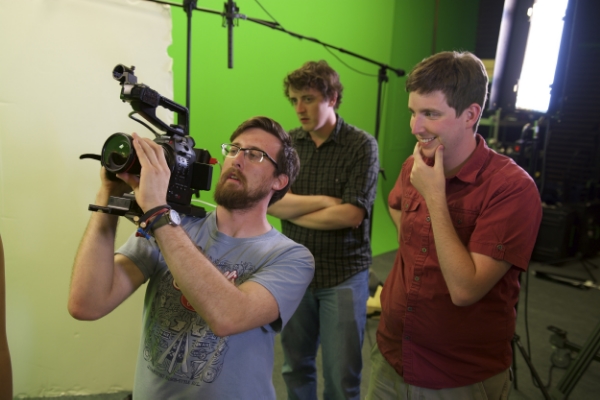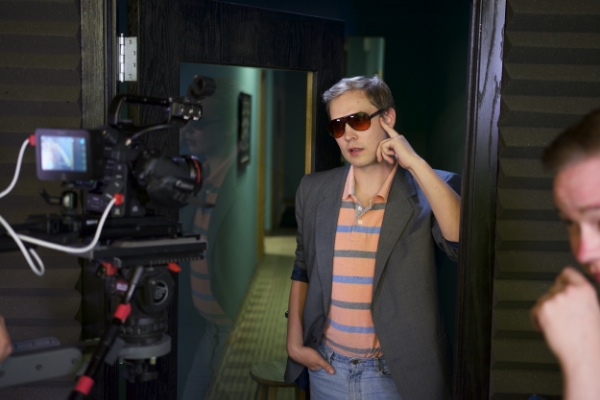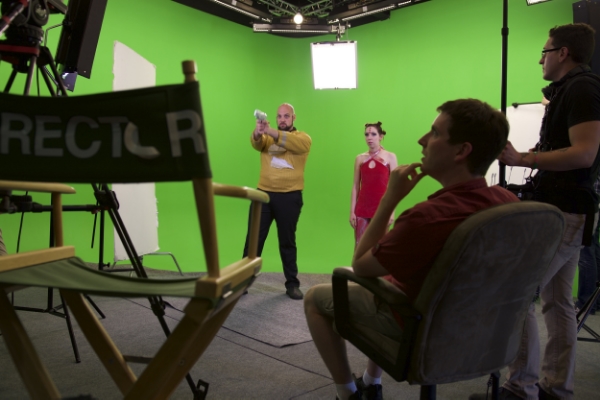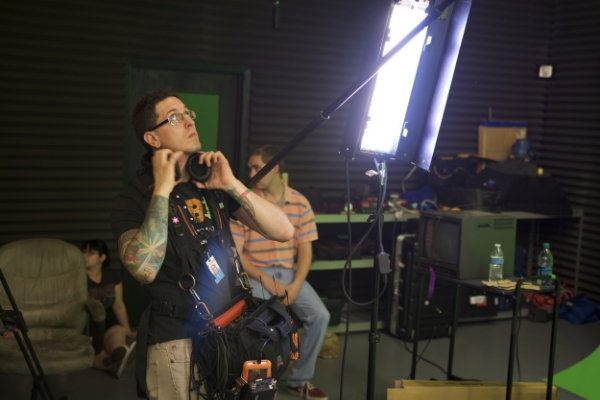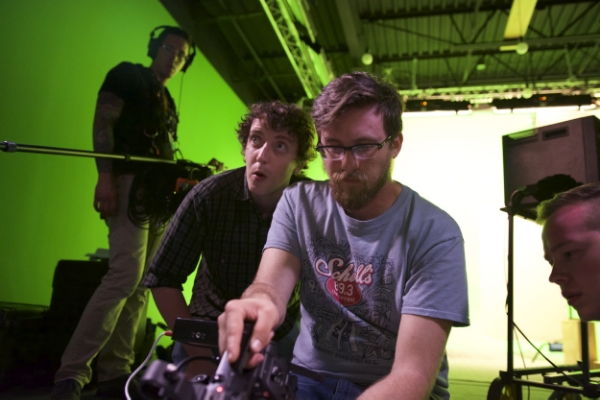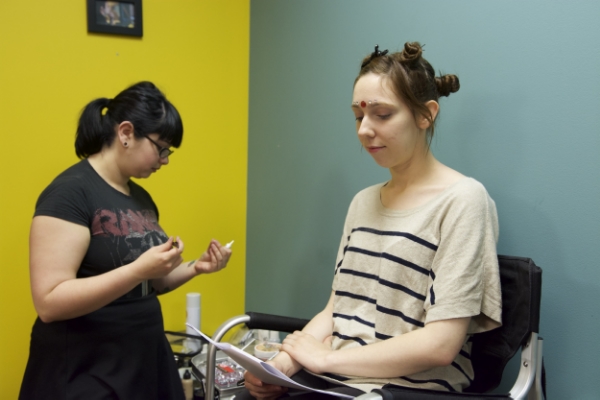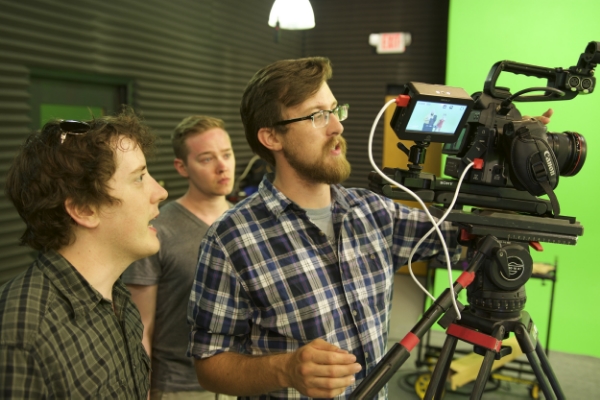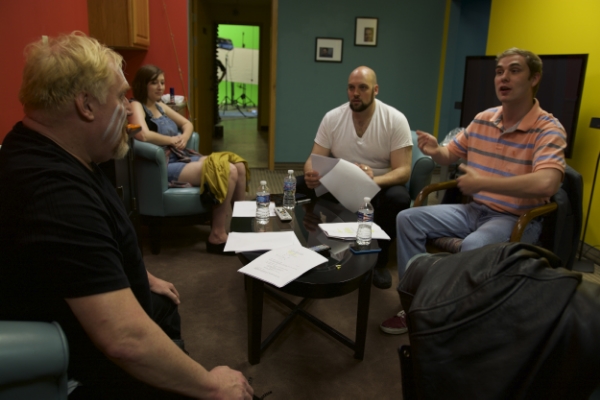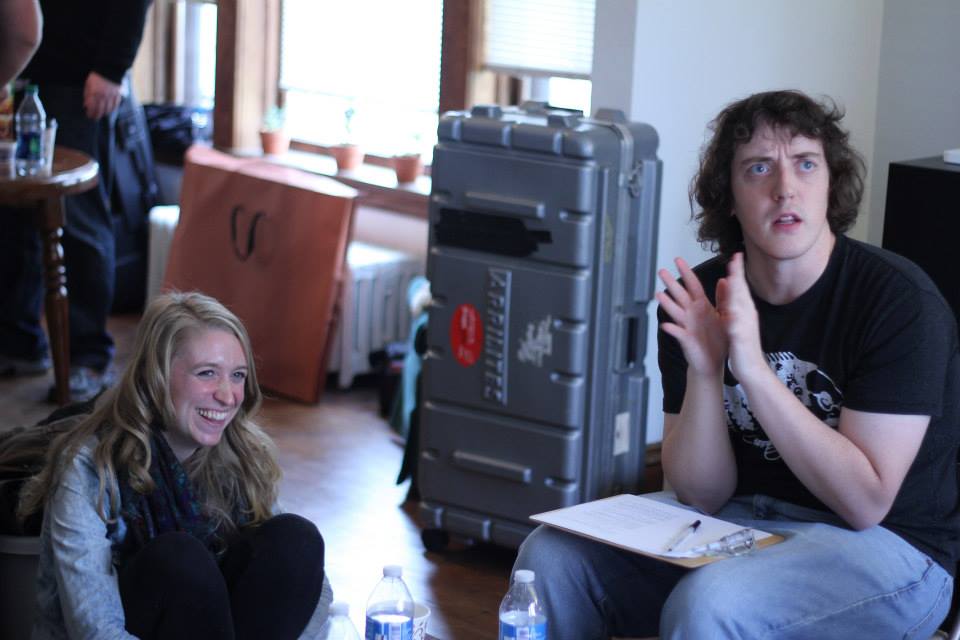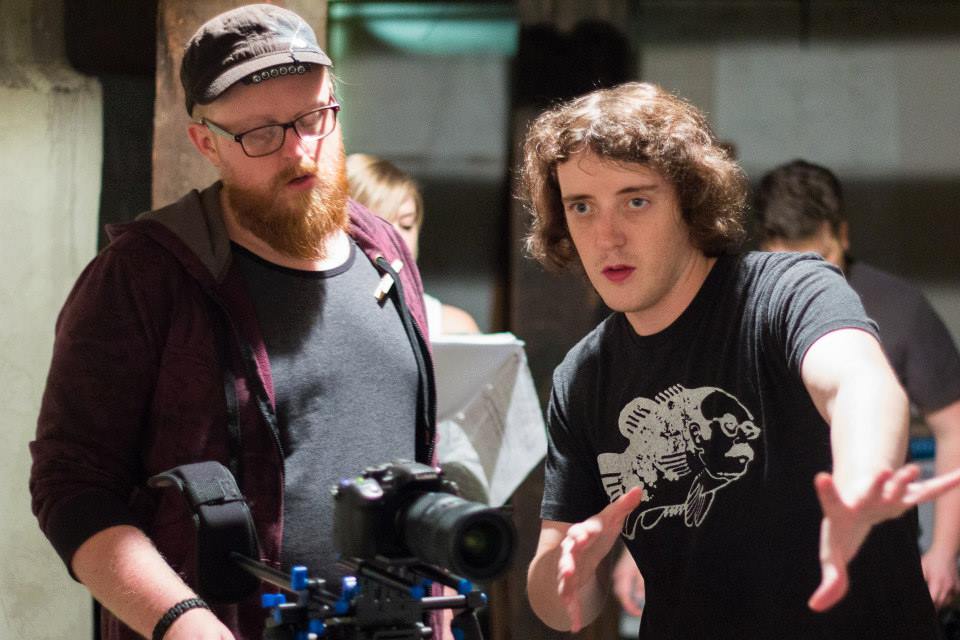As long as we’ve been participating in these film challenges, I’ve longed to draw horror as our assigned genre. When the announcement went out that Minneapolis was to host its first-ever all-horror 48 hour film challenge, I was thrilled! This meant that every genre we could draw would be a subgenre of horror. My dream of horror (very different from a nightmare) was about to come true!
I devoured short horror films before the event weekend. I wanted to learn all the in’s and out’s of what made a short horror film successful. I took extensive notes, listing what techniques worked and what didn’t. I had extensive conversations with Marcus and our frequent collaborator and friend, Craig Larson, about the elements that worked best for each of us. By the time the event weekend arrived, I felt comfortably prepared for the challenge ahead. At kickoff we were assigned the following elements:
Character: Eileen or Ethan Diness, Caterer (this threw us for a loop)
Prop: A broom
Line of dialogue: “Never again”
Genre: Asylum/Insanity
The production of All Dressed in White is an example of how one can go into a 48 with plenty of preparation, experience, and a cracker-jack team in tow and still make a ton of mistakes.
In the retrospective articles for Mostly Attractive Monsters and Put a Ring on It, we’ve well covered an important lesson: play to your strengths. Going into the Horror Project, I had discussed with Marcus and Craig that I wanted to make something truly scary. However, although I had done plenty of research, the execution of effective horror techniques was still uncharted territory. Two Jackets had never made a straight-up horror film before. We were willingly venturing into the unknown, accepting failure as a possibility.
A 48 hour film challenge is not the most forgiving environment for experimentation. Making Put a Ring on It, a silent film, in 2012 was definitely an experiment, but we were drawing on many other strengths to supplement the sacrifice of sound. For that project, we were wise to hold fast to the storytelling voice we’d previously established, losing the dialogue but keeping familiar elements as well as our unique perspective through which we’d filter the story.
With All Dressed in White, I struggled to reconcile the established Two Jackets voice with the darker material we had developed. The result feels inconsistent. My intention was to make something tense and discomforting, but the film’s perspective isn’t subjective enough to really place the viewer in the situation. As a result, the characters’ goals seem unclear, the tense beats are missed, and the moments of relief feel too frequent. The Two Jackets sense of humor, most apparent in the film’s finale, then arrives abruptly without any proper setup. Transitioning between tones in a 6-minute short film is tricky and, when you only have 48 hours to make that film, ill-advised.
The experience of working with a large team to make this film also taught me a great deal about communication on a film set, which is always essential, but even essential-er during the rush of the 48. I made a grave communication misstep early in this production that put us behind for the rest of the weekend.
Since we had more hands on deck than usual, I made the decision to dress the set more than we’d ever previously done. When we arrived on location Saturday morning, we made a list of set and costume items, and I sent a team out to procure them. My mistake was in not establishing a clear deadline or budget for this run. While the budget didn’t end up being a concern, the deadline most certainly was. The production design team didn’t return until close to 1pm, and with the subsequent dressing of the basement location, we weren’t shooting until nearly 3pm.
Due to the increased stress of the late start, I felt off-balance for most of the shoot. Directing requires a great amount of focus, and the stress of the day’s mistakes was clouding my focus and ability to tell the story as best as I could. I was already facing the increased difficulty of an unfamiliar genre and new techniques, and I now had far less time to work through those challenges. I was so pleased with the drive of the team once the camera began rolling, but in hindsight I can now see that we were pursuing an inconsistent and incomplete vision.
If I had taken just a few minutes with the production design team to create a schedule, I’d have shaved hours off our shoot and have prevented the chain reaction that continued to drive us behind. We wrapped shooting around midnight, which isn’t much later than normal, but the delay in shooting meant our editor, Mitch Miller, was behind in the cut. Also, in the rush to complete the shoot, I had hardly given any direction to Mitch. With this slow start, the edit came down to the wire, and we were left without adequate time to finesse sound and color. We made it to the drop-off in time, but the film we handed in (the same version you watched above) still felt rough.
Taking on the dual role of director and producer is tricky. The needs of the story and the production are complementary but different, and if you’re responsible for both, you have to strike a balance. However, that balance requires a great deal of compartmentalization and an incredible amount of focus. If you can split the responsibility, I highly recommend it. For the 2015 48HFP in a few weeks, Marcus and I are sharing the directing role as we did for All’s Chair in Love and War. This way, he can devote the necessary attention to the cast while I focus on the crew.
While All Dressed in White may not have been completely successful, I strongly believe that this experience was well worth having. For one, despite the delays, the team came to play; their commitment to the production kept me afloat. The team also came out to support the film at the screenings, where it ended up in the Best of Fest! At that event, we won the award for Best Costumes, which was a nice consolation given all the extra time we took to procure them.
